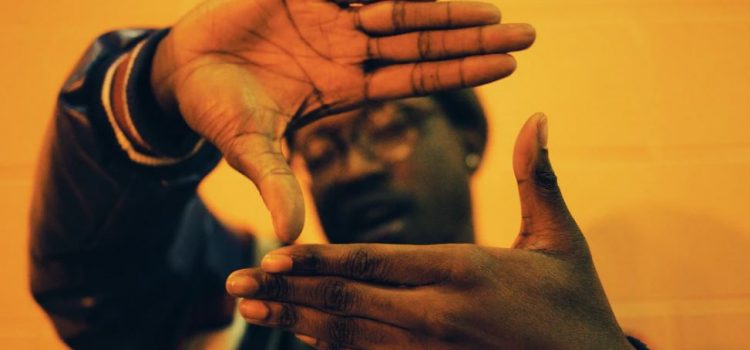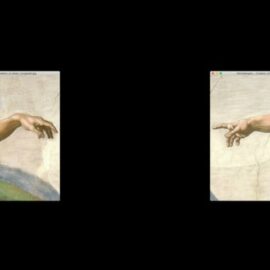

This article is an excerpt from the Shortform book guide to "Biased" by Jennifer L. Eberhardt. Shortform has the world's best summaries and analyses of books you should be reading.
Like this article? Sign up for a free trial here .
What does “racial categorization” mean? Is it possible to fight the brain’s urge to categorize? What methods can you use to stop stereotypes from forming?
Racial categorization is when you see a person of another race as a representative of that race, rather than as an individual. This inclination to categorize people comes from the brain’s need to sort information. However, this doesn’t mean that there aren’t ways to fight this urge to form stereotypes.
Here is the psychology behind racial categorization and how to prevent it.
How Categories Form
According to Dr. Eberhardt, the author of Biased, categorization is another factor at the root of racial bias. Racial categorization is the process of seeing people of other races as representatives of a homogenous category, rather than as individuals, and automatically making assumptions about people based on your experience with that category. For example, if someone grows up in a culture that associates black people with crime, they’re likely to assume that every individual black person they encounter is a criminal.
Eberhardt emphasizes that categorization is an automatic neurological process, not a conscious choice. It’s the brain’s way of sorting chaos into order. Mental categories are a collection of all your beliefs, experiences, feelings, knowledge, and preferences relating to a particular thing. For example, when you think of the category “sports,” your mind automatically calls up images of people playing sports as well as all the information stored in your memory about different sports, their various rules, famous athletes, and so on.
The feelings and memories you associate with the “sports” category are here, too. Maybe you’re an avid basketball player, so thinking about basketball brings up happy memories and a feeling of confidence. On the other hand, if you were bullied in school for not being athletic, thinking about any sport might bring up painful memories. Either way, the moment you see something sports-related, your brain cues up all the thoughts and feelings you have about the entire category, starting with the strongest associations (so if you met your spouse at a college football game, that will come to mind much faster than the name of a famous baseball player).
This same process applies to groups of people. According to Eberhardt, whether we’re aware of it or not, we all internalize stereotypes and cultural beliefs about groups of people, and that information gets stored in the corresponding category. When you see an individual member of that group, your brain automatically pulls up the entire category—even parts you don’t consciously agree with or don’t even realize are there. That’s why, regardless of your conscious beliefs, seeing a single black person can bring to mind ingrained messages like “that person is dangerous” or “that person is good at basketball.”
(Note: One way to avoid this mental reflex is to look for more individuating information about the person. In Superforecasting, authors Philip Tetlock and Dan Gardner argue that any new piece of information we get about a person, no matter how irrelevant it seems, makes it harder for us to categorize that person. This is called the “dilution effect.”)
Stereotypes
Our natural impulse to group people into categories sometimes leads us to rely on reductive stereotypes. Stereotypes are automatic, culturally-instilled beliefs about a group of people that we assume apply to all members of that group, even when that’s not true (for example, the idea that all black men are violent is a stereotype).
Eberhardt asserts that, just like categorization, stereotyping is an automatic neurological process that serves a functional purpose. There is simply too much information in the world for our brains to process each individual thing separately. But when stereotypes are applied to people, they become a dangerous source of bias.
Relying on stereotypes to inform our understanding of other people leads to confirmation bias, where people seek out information that confirms what they already believe and ignore anything that challenges those beliefs. (Shortform note: To avoid confirmation bias, author Nassim Nicholas Taleb recommends a technique called “negative empiricism” in his book The Black Swan. Negative empiricism is the process of seeking out information that disproves your original belief. In the context of racism, if someone believed black people were more likely to commit crimes, they might look for evidence that black people are actually less likely to commit crimes than people of other races.)
For example, when researchers showed people photos of a black person’s face moving gradually from an angry expression to a friendly one, people who were more racially prejudiced against black people labeled the face “angry” for more frames than less prejudiced people. In other words, they interpreted the neutral expressions between angry and friendly as still “angry.” Their prejudice colored their perception in a way that confirmed their existing beliefs. Seeing what you want to see instead of what’s really there is the heart of bias.
Stop Your Stereotypes by Slowing Down
Relying on stereotypes may be a natural cognitive process, but unchecked stereotypes can cause real harm to people of color. One way to minimize your risk of accidentally causing harm is to slow down. Eberhardt touches on this idea in Chapter 10, and other writers have also discussed the connection between speed and bias. For example, in Blink, Malcolm Gladwell argues that when we make decisions too quickly, we don’t have time to take in all the relevant information, so our brains automatically fill in the gaps with stereotypes and assumptions. However, when you take a moment to stop and think before acting, you have more time to process the specific situation without relying on stereotypes.
Nobel laureate Daniel Kahneman explains why slowing down might help us avoid stereotypes in Thinking, Fast and Slow. Kahneman argues that human thinking operates in two different systems: System 1 is automatic, unconscious processing, while System 2 is conscious, effortful thought. System 1 thoughts can be completely involuntary and happen almost instantaneously, which is why System 1 is the home of bias and stereotypes. By slowing down and reminding yourself to apply conscious thought to a situation that invokes bias, you force your brain to switch from System 1 thinking to System 2 thinking, which makes it much easier to avoid relying on stereotypes.
Categorization in the Brain
As we’ve noted, like the other-race effect, categorization is a normal, mostly subconscious brain function that helps us process the enormous amount of information we encounter in everyday life. Within this process, we automatically prioritize information we use most often and rely on simplistic categories for everything else. Categorization is not a bad thing by default, but it can easily be hijacked into making generalizations based on race and stereotypes (like, “all black men are dangerous”).
According to Eberhardt, the other-race effect plays a role in determining the exact generalizations people make: People are automatically predisposed to focus on faces they’ve sorted into the “like me” category—even if they’re wrong about that categorization—and block out or ignore everything else.
Research on the impact of categorization shows just how powerful those in-group and out-group designations are. In one study, researchers showed participants computer-generated faces. The facial features were specifically designed to be racially ambiguous, but each face was shown twice: once with a hairstyle typically worn by Latinos, and once with a typically African American hairstyle. When they saw the same faces later on, Latino participants were significantly better at recognizing faces with the Latino hairstyle than the African American hairstyle—even though it was the exact same face.
Once the participants in this study categorized the face as a member of their own race based on the hairstyle, they automatically focused more on memorizing their features because human brains are primed to focus on in-group faces. Essentially, your brain sees faces of your own race as individuals—not just members of a reductive category—so it automatically focuses on encoding the unique features of those faces.
Resist Categorizing by Changing Your Focus and Experiences
Other authors also warn about the dangers of making assumptions based on categorization instead of looking at people as individuals. In Factfulness, author Hans Rosling refers to categorizing as “the generalization instinct.” He argues that we can overcome the generalization instinct by focusing on differences within groups of people and similarities across groups of people. For example, if your mental category for black men includes “good at sports,” you might challenge that by focusing on the countless black men who aren’t athletic, or by focusing on the number of professional athletes from other races. That way, you’ll remind yourself that not all black men are athletic, and not all athletic people are black men.
In Blink, Malcolm Gladwell also offers advice for resisting categorizing by spending more time with people from other races and cultures. This works because we unconsciously prioritize information that we use in daily life—so if you’re exclusively surrounded by white people, you’re more likely to slot everyone else into reductive categories instead of seeing them as individuals. However, if you spend more time with people of other races or seek out books and movies that highlight other groups’ experiences, you’ll unconsciously begin to prioritize information about those other groups rather than falling back on categories.

———End of Preview———
Like what you just read? Read the rest of the world's best book summary and analysis of Jennifer L. Eberhardt's "Biased" at Shortform .
Here's what you'll find in our full Biased summary :
- How implicit bias forms in the brain
- Whether or not bias training actually works
- Why there has been a sudden resurgence in white nationalism





